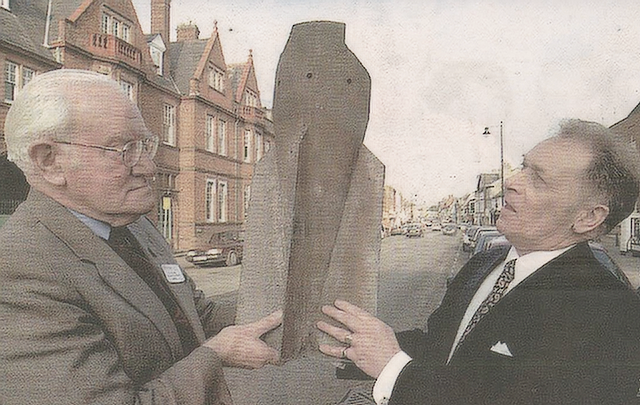On February 18th 2022, a plaque wase unveiled on the Memorial Hall by Newmarket Town Council, to commemorate the civilian lives which were lost in Newmarket on that day, 81 years before. Military lives lost are rightly honoured on war memorials, such as the one on The Severals, but the ordinary Newmarket folk who died in Newmarket’s worst disaster of modern times, have never before been publicly commemorated.
The only other comparable event which had wrought such destruction and death upon the town was the Great Fire of Newmarket, 22nd March 1683, during the reign of Charles II. That disaster killed many and destroyed half of Newmarket on the St Mary’s side of the High Street.
During World War I Newmarket had received Zeppelin raids, which had caused death and destruction but nothing on the scale of that on February 18th 1941.
Eye witness accounts state that it was a bright, sunny, Tuesday market day. In those days, Newmarket market was a large and important affair, especially during times of wartime rationing, and it also drew in many people from the local villages. Newmarket man Billy Blythe recalled that its many stalls sold local meat and produce and that, at least in peace time, the stalls opened until late in the evening.
The 1941 tragedy began, according to eye witnesses, at 3 minutes to 3 pm when a Nazi Dornier 17z unexpectedly flew in from the Clocktower end of the High Street, scattering machine gun bullets and dropping 10 bombs, which devastated the length of the north-west side of the High Street (St. Mary’s side). This caused 20 deaths at the time (27 eventually resulted) and over 200 people were injured.
The Newmarket History Society
Much of Newmarket’s history had been forgotten by the 1970s when the small study group of enthusiastic local historians began their research to recover it. This group later formalised to become ‘Newmarket Local History Society’ around 1984. The Society began to research many local topics and later made much of their work public. In so doing, NLHS was restoring public knowledge of Newmarket’s very long and interesting history and, over the years, further research and NLHS publications, have considerably expanded this.
In the later 1990s / 2000s NLHS later turned to research the mysterious 1941 Newmarket bombing raid. The event was shrouded in wartime secrecy and available records were sparse, so it was essential to also collect personal accounts whilst the people who remembered it were still alive. Even the Newmarket Journal could only report the tragedy as the bombing of a Suffolk market town.
One of the first breakthroughs NLHS had was that our set of pictures of the damage to the town were given to us by a Norfolk newspaper which was closing down. Then, a local man donated the remainder of a bomb casing to the Society. It came from the High Street ruins, and had been used by his family as a stick stand in the hall for many years! We nicknamed it “The Newmarket Bomb”
Someone went to Germany to research the Bundesarchiv, as Nazi record-keeping was meticulous. No record existed about the Newmarket bombing. Similarly, in Britain NLHS could find no official records. So, why did the raid happen? Why that day? There are several plausible theories .What do you think? Let NLHS know by writing to us c/o the Memorial Hall

